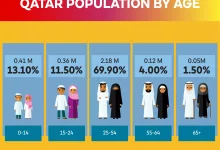Population distribution refers to the way people are spread across a geographic area. It is influenced by a complex interplay of factors that shape where and how populations concentrate or disperse within a region or country. Understanding these factors is crucial for urban planning, resource allocation, and socio-economic development strategies.
**1. ** Physical Geography:
Physical geography plays a significant role in population distribution. Factors such as terrain, climate, and natural resources directly impact where people choose to settle. Coastal areas often attract populations due to trade opportunities, fishing industries, and access to water for transportation and drinking. Fertile plains and river valleys are conducive to agriculture, fostering dense rural populations. Conversely, harsh climates or rugged terrain may deter settlement or restrict population growth in certain areas.
2. Economic Opportunities:
Economic opportunities are a primary driver of population distribution. Urban areas with diverse industries and job prospects tend to attract large populations seeking employment and better living standards. Economic activities such as manufacturing, services, finance, and technology cluster in cities, creating employment hubs that draw people from rural areas and smaller towns. Conversely, regions with limited economic opportunities may experience outmigration as people seek better prospects elsewhere.
3. Social and Cultural Factors:
Social and cultural factors profoundly influence where people choose to live. Proximity to family and community ties often dictate settlement patterns, especially in rural areas and small towns where social networks provide support systems. Cultural preferences for certain lifestyles, traditions, or religious affiliations can also impact population distribution. For example, cultural heritage sites or religious centers may attract populations seeking to maintain or immerse themselves in specific cultural practices.
4. Political Factors:
Political decisions and policies shape population distribution through governance, infrastructure development, and administrative boundaries. Government policies on housing, transportation, healthcare, and education can influence where and how populations grow. Investment in infrastructure such as roads, railways, and utilities can open up new areas for settlement or enhance connectivity between regions, impacting migration patterns and population distribution.
5. Historical Factors:
Historical events and legacies leave lasting imprints on population distribution. Settlement patterns established during colonial eras, for example, often persist today, influencing where populations concentrate and how urban centers develop. Historical migrations due to conflicts, wars, or economic shifts can create diaspora communities or urban clusters with distinct cultural identities. Understanding historical contexts is crucial for interpreting present-day population distributions and planning future developments.
6. Technological Advancements:
Technological advancements, particularly in transportation and communication, have revolutionized population distribution. Improved transport networks reduce travel times between regions, facilitating commuter lifestyles and enabling people to live farther from urban centers while maintaining connectivity. Telecommunications and internet access allow for remote work and virtual interactions, potentially decentralizing populations as people seek lifestyle preferences over proximity to traditional job centers.
7. Environmental Considerations:
Environmental factors such as natural disasters, climate change, and environmental degradation can impact population distribution. Areas prone to natural hazards like earthquakes, hurricanes, or floods may experience population shifts due to safety concerns or infrastructure damage. Climate change affects agricultural productivity, water availability, and habitability, influencing where people can live sustainably. Environmental conservation efforts may restrict development in ecologically sensitive areas, shaping population distribution patterns.
8. Government Policies and Interventions:
Government policies and interventions play a crucial role in shaping population distribution through planning regulations, zoning laws, tax incentives, and social welfare programs. Policies aimed at decentralizing population centers, promoting regional development, or revitalizing rural economies can influence migration patterns and urban-rural dynamics. Housing policies, land use planning, and investment in public services impact where and how populations settle within urban and rural areas.
9. Demographic Factors:
Demographic factors such as population growth rates, fertility rates, aging populations, and migration trends directly influence population distribution. High population growth rates in developing regions can lead to rapid urbanization and strain on urban infrastructure. Aging populations in developed countries may lead to demographic shifts as retirees seek affordable housing and healthcare options. Migration trends driven by economic opportunities or political stability impact population distribution globally.
10. Globalization and Mobility:
Globalization has increased mobility and interconnectedness, influencing population distribution on a global scale. International migration flows driven by economic opportunities, political instability, or cultural exchange shape population diversity in urban centers worldwide. Global supply chains and trade networks impact regional economies and employment opportunities, attracting diverse populations to urban hubs with specialized industries or global market access.
In conclusion, population distribution is a multifaceted phenomenon influenced by physical geography, economic opportunities, social and cultural factors, political decisions, historical legacies, technological advancements, environmental considerations, government policies, demographic trends, and globalization. Understanding these factors is essential for policymakers, urban planners, and communities seeking to manage growth, promote sustainable development, and enhance quality of life for populations around the world.




